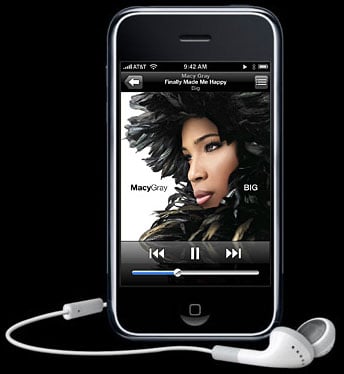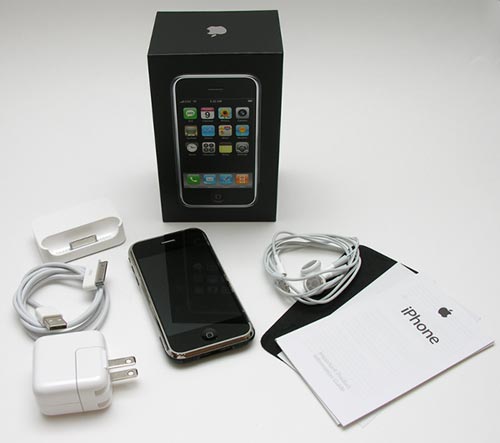 Apple iphone
Apple iphone Apple iphone
Apple iphone Apple iphone
Apple iphone Apple iphone
Apple iphone Apple iphone
Apple iphone
 The iPad is a tablet computer designed and marketed by Apple, meant for internet browsing, media consumption, gaming, and light content creation. Unlike many older tablets, it uses fingertips for input instead of a stylus. Released in April 2010, it introduced a class of devices between smartphones and laptops.
The iPad is a tablet computer designed and marketed by Apple, meant for internet browsing, media consumption, gaming, and light content creation. Unlike many older tablets, it uses fingertips for input instead of a stylus. Released in April 2010, it introduced a class of devices between smartphones and laptops. Like the older iPod Touch and iPhone devices, the larger iPad runs the iPhone OS and uses a multi-touch LCD for most user interactions. It runs iPad-specific applications as well as those written for the iPhone and iPod touch, including e-book readers.
The iPad uses WiFi or Wireless WAN to browse the Internet, load and stream media, and install software.
Apple's first tablet computer was the Newton MessagePad 100[22] introduced in 1993, which led to the creation of the ARM6 processor core with Acorn Computers. Apple also developed a prototype PowerBook Duo-based tablet, the PenLite, but did not sell it to avoid hurting MessagePad sales. Apple released several more Newton-based PDAs, and discontinued the last, the MessagePad 2100, in 1998.
Apple re-entered the mobile-computing market in 2007 with the iPhone. Smaller than the iPad but featuring a camera and mobile phone, it pioneered the multitouch interface of iPhone OS. By late 2009, the iPad's release had been rumored for several months. Mostly referred to as "Apple's tablet", iTablet and iSlate were among speculated names. The iPad was announced on January 27, 2010 by Steve Jobs at an Apple press conference at the Yerba Buena Center for the Arts in San Francisco.
Three days later, at the 52nd Grammy Awards, Stephen Colbert used an iPad in announcing the nominees.
Apple began taking pre-orders for the iPad from U.S. customers on March 12, 2010. The Wi-Fi version of the iPad went on sale in the United States on April 3, 2010, at 9:00 am local time, with hundreds of customers lined up outside stores nationwide. The Wi-Fi + 3G version was be released on April 30. 3G service in the United States is provided by AT&T and sold with two prepaid contract-free data plan options: one for unlimited data and the other for 250 MB per month at half the price. The plans are activated on the iPad itself and can be canceled at any time.
The iPad will also be available in Australia, Canada, France, Germany, Italy, Japan, Spain, Switzerland and the UK at the end of May 2010.[6] Apple stated they will announce international pricing and begin taking online pre-orders for iPad on May 10.
Israel recently authorized importation of the iPad, after a prohibition related to possible Wi-Fi interference with other devices.


The touchscreen is a 25 cm (9.7 in) liquid crystal display (1024 × 768 pixels, 132 ppi, XGA) with fingerprint–resistant and scratch-resistant glass. Like the iPhone, the iPad is designed to be controlled by bare fingers, not gloves and styli that prevent electrical conductivity (although there are gloves and styli designed for this use).
The display responds to two other sensors: an ambient light sensor to adjust screen brightness and a 3-axis accelerometer to sense iPad orientation and switch between portrait and landscape modes. Unlike the iPhone and iPod touch, which work in three orientations, the iPad supports screen rotation in all four orientations, meaning that the device has no intrinsic "up" or "down"; only the position of the home button changes. Most iPad applications support both portrait and landscape mode.
The iPad has a switch to lock out this screen rotation function (reportedly to prevent unintended rotation when the user is lying down). There are a total of four physical switches, including a home button below the display that returns the user to the main menu, and three plastic physical switches on the sides: wake/sleep and volume up/down, along with the screen rotation lock.
The iPad can use Wi-Fi network trilateration to provide location information to applications such as Google Maps. The 3G model contains A-GPS while both models have a digital compass.
The back of the Wi-Fi model iPad is made of contoured aluminum with black plastic buttons. The Wi-Fi + 3G model also has a black plastic accent on top of the device which helps with 3g radio sensitivity.
The iPad does not have any ports for wired connectivity.
Dual speakers housed inside the iPad provide mono sound via two small sealed channels in the interior speaker assembly that direct the sound outwards toward the three audio ports carved into the bottom-right of the unit. The microphone is within the device. A volume switch is on the right side of the unit, and a 3.5 mm TRS connector audio-out jack provides stereo sound for headphones on the top-left corner of the device. The iPad supports normal headphones and models with microphones, volume controls, or both. Microphones can be used for voice recording.
The built-in Bluetooth 2.1 + EDR interface supports the HSP, A2DP, and HID profiles, which allow wireless headphones and keyboards to be used with the iPad. However, the iPhone OS does not currently support the OBEX file transfer protocol.
iPad video output over VGA is set to 1024 x 768 using a 720p scan rate.
The iPad uses an internal rechargeable lithium-ion polymer battery. The iPad is designed to be charged with a high current (2 amperes) using the included USB 10 W power adapter. While it can be charged by a standard USB port from a computer, these typically provide lower current (500 milliamperes or 1 ampere). As a result, if the iPad is turned on while being charged with a normal USB computer port, it will charge much more slowly, if at all.
Apple claims that the iPad's battery can provide up to 10 hours of video, 140 hours of audio playback, or one month on standby. The battery loses capacity over time and is not designed to be user-replaceable. As in the battery-replacement program for iPod and the original iPhone, Apple will replace an iPad that does not hold an electrical charge with a refurbished iPad for a fee of US$99.
The iPad was released with three options for internal storage size: a 16, 32, or 64 GB flash drive. All data are stored on the flash drive and there is no option to expand storage. Apple sells a camera connection kit with an SD card reader, but it can only be used to transfer photos and videos.
The Wi-Fi + 3G model has a micro-SIM slot (not mini-SIM) located on the side of the device. The 3G model may be used with an AT&T data plan that does not require a contract. Apple has heavily advertised the uses of the no-contract plan on their website. Unlike the iPhone, which is usually sold locked to specific carriers, the 3G iPad is sold unlocked and can be used with any compatible GSM carrier.

Apple offers several iPad accessories, including:
 2010 apple iPad
2010 apple iPad 2010 apple iPad
2010 apple iPad 2010 apple iPad
2010 apple iPad

Nokia's all-you-can-eat, unlimited music downloads service has landed in China, offering subscribers access to an extensive catalogue of Windows Digital Rights Management (DRM)-free tracks.
The service will operate in a very similar way to that which is available to UK customers, with all Comes With Music-branded Nokia phones bundled with 12 months access at the point of purchase.
During this time they are entitled to download as many songs as they wish to. Accounts are transferable to new phones, but only if they are part of the Comes with Music range.
The exclusion of DRM, which is employed by certain services in order to prevent songs being copied onto multiple devices, suggests that Nokia and major music labels are less concerned with restricting the use of their products and more interested in getting people signed up to Comes with Music.
